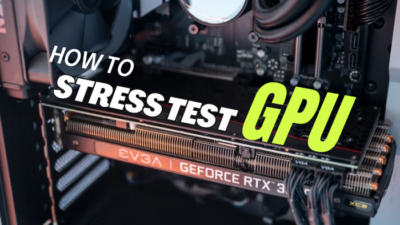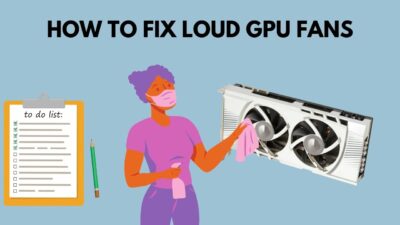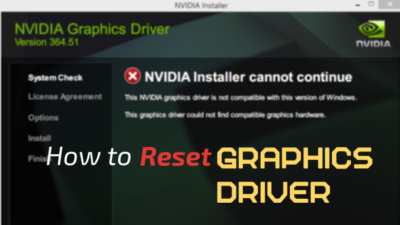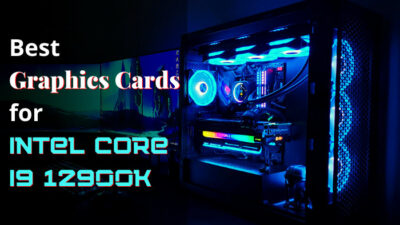The death of a graphics card means the end of stunning visuals, seamless performance, and intensive gaming sessions. A graphics card that’s taking its final breaths can be a scary situation, especially for a gamer and professional animators & video editors.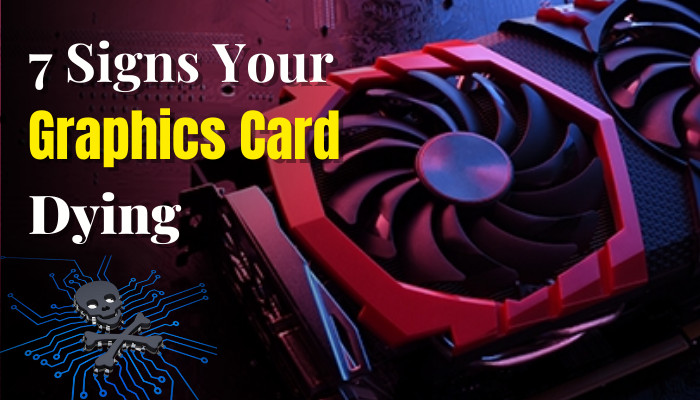
But thankfully, there’re symptoms you can observe to determine whether the GPU is healthy.
In this article, I’ll explore the reasons why a graphics card may fail, signs that indicate GPU’s dying, and what steps you can take to prevent it from happening.
Let’s begin!
What are the Symptoms of a Dying GPU?
The most common sign of a graphics card that’s dying is you’ll see screen tearing and weird glitches and colors showing up and moving around all over the screen. A bad GPU is also responsible for loud fan noise, computer & driver crashes, and BSOD.
Below I’ve provided the signs that a graphics card shows when it’s going bad.
Here are the symptoms of a dying GPU:
1. Computer Crashes
Graphics cards that are going bad can cause a PC to crash. These crashes can vary from a simple BSOD to a PC freeze but don’t necessarily show a blue screen. It can also force the computer to restart randomly or shut it down for no reason. 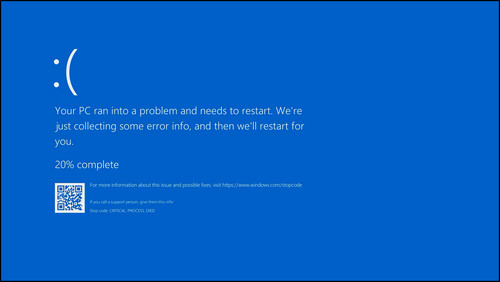
Keep in mind, not every crash can be due to the graphics card, but if you have memory dumps enabled, a faulty GPU might be responsible.
2. Artifacts
When something is going wrong with the graphics card, you may notice some bizarre visuals on the screen. The colors on the screen look strange on the monitor, 3D models will stretch for no reason, digital snow will appear, and the entire screen will be covered in visual garbage. 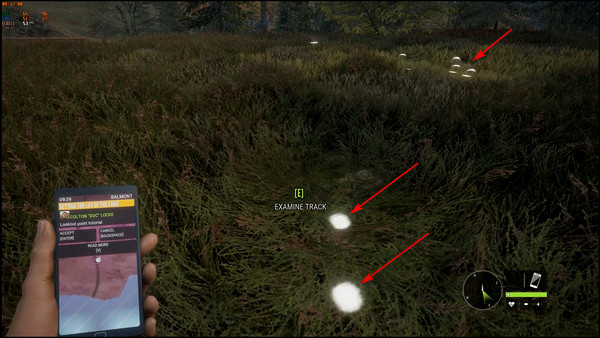
3. Loud Fan Noise
When launching software that uses 3D graphics, or even when you boot up the computer, and it sounds like a jet engine inside the PC, this is a telltale sign that one of the system fans is going into overtime.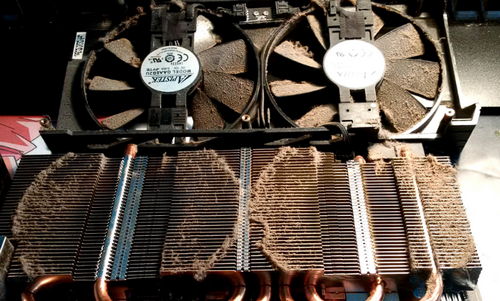
And if this fan is one of the graphics cards, it can be a sign that things are not quite normal with it.
4. Video Driver Crashes
Sometimes you’ll be using your PC as usual, and the screen will go black for a few seconds. When it returns, you’ll be informed the video drivers have crashed and had to reopen. This won’t crash the whole system but can be annoying if it happens frequently.
Quickly check our epic post on how to fix Nvidia Graphics Card not detected in Windows 10.
5. Black Screen
Every so often, you don’t see any visual clues at all. A graphics card, on the way to going bad, can simply decide to stop working and doesn’t display anything.
When this happens, you’ll have to resort to integrated graphics or a cheap throwaway GPU to determine if it’s your card or the monitor that’s faulty. In case the computer works as usual when you change the GPU, most likely it’s your graphics card being problematic.
6. Screen Stuttering
Screen stutter means you experience random video stuttering or visuals freeze and then everything goes back to normal. Viruses or malware, defective hard drives, or RAMs can cause such events.
But if you are confident that your PC is virus free, the hard drives and RAMs are working fine, or they are rather new, then you can consider your graphics card to be at fault.
7. Random Glitches
This means you see random colors on the screen that look like dead pixels. A dead pixel usually stays on one part of the screen, in this case, the monitor has problems. But if those random dead pixels move around the screen, it is one of the symptoms that the GPU is going bad. 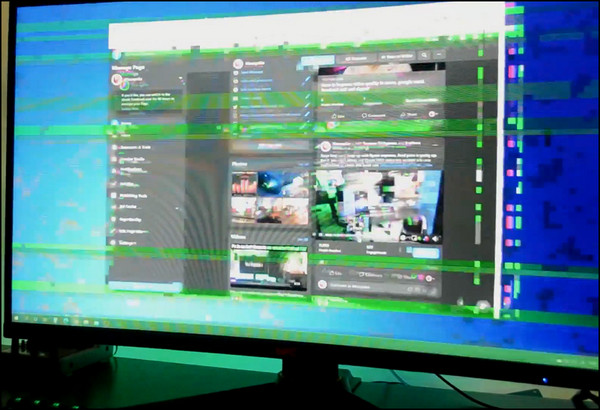
At this point, you can still fix the graphics card, depending on how often you get dead pixels.
Here’s a complete guide on do all CPUs have Integrated Graphics Card.
What Causes Video Card Failure?
Most commonly dust and lint buildup in the video card fan is responsible for its failure. Also, moisture buildup in the GPU due to using the computer directly in front of an AC can break the card. Additionally, overheating and excessive overclocking are accountable for faulty graphics cards.
Below I’ve described the factors that cause video card failure:
Overheating
Overheating basically means your graphics card is reaching its maximum temperature limit. This can occur due to game settings that the GPU cannot handle, or you are using a monitor with specs beyond your graphics card capability.
Although most GPU temperatures nowadays are rated up to 90 °C, I’d recommend not running the video driver beyond 87 °C just to be on the safe side.
Using a graphics card running at 90 °C for long hours of gaming, heat will build up in your PC eventually. It can also make other components overheat as well. As a result, you’ll get sudden shutdown, a blue screen, flickering, or video stuttering.
Static Overload
Static overload happens during the installation process, either when building a new PC or when putting the computer components together after a thorough cleaning.
This is why you should always wear an anti-static band to prevent static overload. If you don’t have one, simply rub your hands on any metal surface before installing your PC parts. 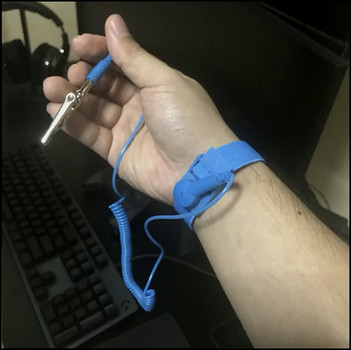
Extreme Overclocking
Excessively overclocking the GPU can prevent it from working normally and eventually failing beyond repair. So, just stick to the auto-overclock available in your motherboard BIOS.
Moisture Buildup
Pointing the Air Conditioning airflow directly toward the PC can damage the graphics card along with other PC components. Cold air has little water droplets that can harm the components over time.
Read our new guidance article on what to do with old Graphics Card.
How to Fix a Faulty Graphics Card
To fix a faulty graphics card, don’t let the GPU get too hot. Supply proper airflow and let the temperature cool down. Make sure the drivers are updated and the graphics card is enabled. Also, occasionally clean the video card and check that it is correctly installed in the PCI slot.
Here are the methods to fix a faulty graphics card:
Switch to a Different API
If your graphics card is exhibiting problems for specific games, maybe it’s not actually the GPU’s fault. Modern GPUs produce 3D graphics through 3 different APIs—DirectX, OpenGL, and Vulkan. Most games allow you to choose the rendering API from the graphical settings. 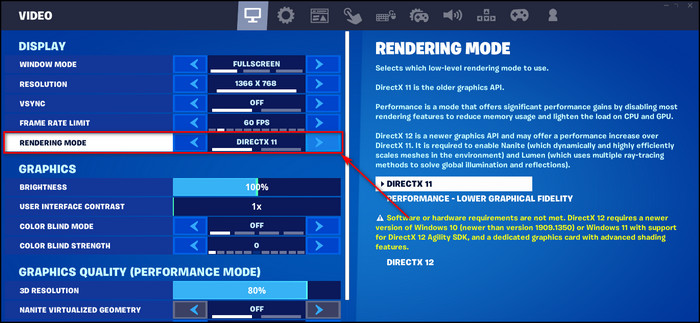
Further complicating things, there are different versions of these APIs with different levels of support depending on the combination of the system drivers, GPU, and operating system.
Change the Graphics Driver Version
Graphics card drivers can be unstable. If they are outdated, they can cause issues when playing modern AAA titles. On the other hand, in case you have an old GPU, then upgrading the driver version can do more harm than good for system stability. 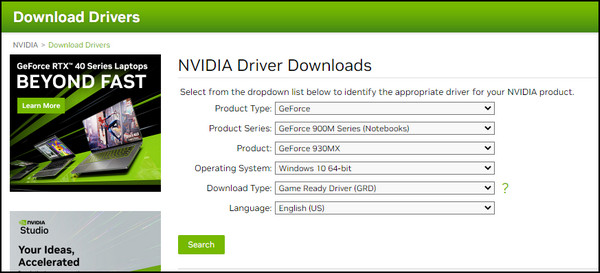
Assuming you haven’t updated your graphics card drivers in a while, update them. Alternatively, if you’ve recently updated the drivers, try rolling back the drivers to an earlier date and check if you still get visual problems on the PC. 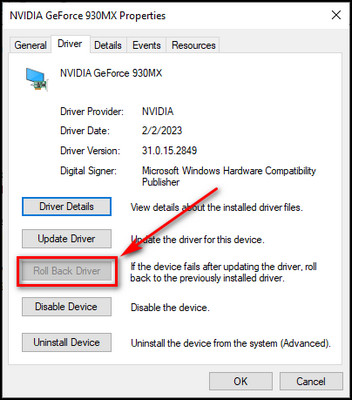
Uninstall Graphics Driver Completely
Suppose you are moving from an AMD GPU to one made by Nvidia. In this case, it’s best to fully uninstall the previous GPU drivers. Unfortunately, the official uninstallers tend to leave traces behind.
Thankfully, there’s a third-party app that you can use—Display Driver Uninstaller, to remove drivers from your computer completely. 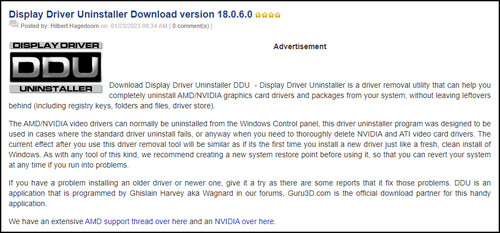
Download the app from its official page at Guru 3D and run it before swapping your GPU or installing your desired driver.
Use the DDU program to eliminate any traces of existing display drivers, then either shut down your computer and replace the GPU with the new one or restart the computer and install different graphics drivers.
Ensure Proper Airflow
For good airflow, open your PC case during gaming and set the fan curve accordingly using MSI Afterburner. That way, the fans will speed up automatically when the temperature rises in your computer. You’ll also be able to monitor the CPU and GPU temperature in real time.
Also, check our latest post on how to tell if a game is CPU or GPU intensive?
Let the Graphics Card Cool Down
There’s a high chance the graphics card is experiencing issues due to overheating. This is especially relevant in case the error only happens after rendering 3D Graphics for a while, or if you notice your graphics card’s fan getting extremely loud during rendering.
If this is the case, try checking the temperatures of your graphics card and see how hot it’s getting.
You can combat overheating by removing the GPU and cleaning any dust using compressed air. Also, try opening the card itself and reapplying the thermal paste. But, I wouldn’t recommend it if you don’t have any experience.
There are also tools to regulate the graphics card’s fan and graphical output, such as MSI Afterburner and SpeedFan.
Make Sure the GPU is Seated Correctly
Graphics cards need to be properly seated in their PCI slots in order to work efficiently. If they require additional power plugs to operate, these need to be firmly plugged in without any wiggle room. Failing to do so may cause errors related to the graphics card. 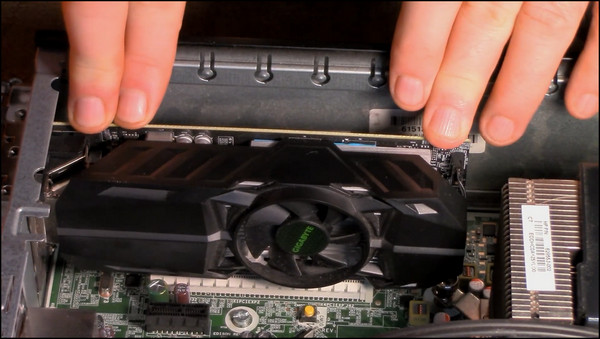
Ensure the GPU is correctly slotted into the PCI and screwed in tight, and make sure any power connectors that are needed for operation are properly clipped into the unit.
Check the Video Cable
If the cable from your PC to the graphics card goes bad, it can create weird visual effects. So, when something visually strange happens, ensure the video cable is properly plugged into both sides or replace the cable.
Check the Monitor
The graphics card may not be the one responsible for visual glitches, rather it can be a sign that the monitor is on its way out. Try replacing either the monitor or the GPU. If the problem goes away, whatever you replaced was the culprit.
Check our latest post on how to remove Graphics Card from Motherboard.
FAQs
How do you know if your graphics card is dying?
When you see pixelated colors, screen tearing & flickering, weird glitches, and random artifacts moving all around the screen, you’ll know your graphics card is dying.
What happens when a graphics card goes bad?
When a graphics card goes bad, it can freeze your screen while watching videos or playing games, and sometimes, the entire system can crash.
How do I know if my GPU is fried?
If your GPU is fired, your computer will turn itself off and won’t boot up again or the monitor will not display anything.
Can a graphics card be repaired?
Yes, a graphics card can be repaired. But there’s no way of fixing a graphics card when its memory or core goes bad.
Final Thoughts
As you can see, understanding what to look for in a dying GPU and taking the necessary steps quickly will give you a much better chance to repair the graphics card before it’s too late.
That’s why, if you think you’ve encountered some of the symptoms I’ve described here, simply follow the fixes in this article, and your GPU will be perfectly fine for years to come.
Leave a comment below in case you have further questions, and we’ll get back to you.

